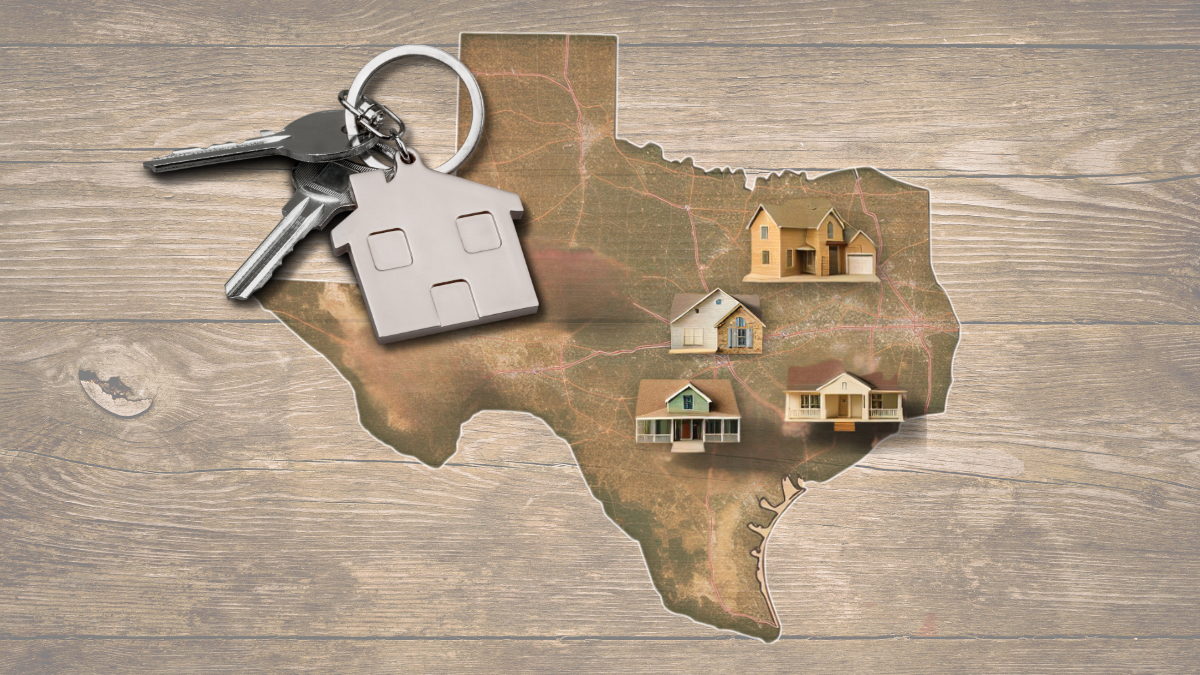Austin’s housing market showed the sharpest shift toward buyers among Texas’ major metros, with 53.4% of active listings taking price cuts as of Nov. 1, 2025. The Austin-Round Rock-San Marcos metro’s median list price dropped to $499,000 from $525,231 a year earlier, marking a $26,231 decline.
The divergence across the Texas Triangle metros reveals how even neighboring markets can experience different conditions. The Texas Triangle—a megaregion formed by Dallas–Fort Worth, Houston, San Antonio, and Austin that houses the vast majority of Texans—shows varying market dynamics despite geographic proximity. While Austin and San Antonio moved into buyer-favorable territory, Dallas-Fort Worth and Houston maintained neutral conditions despite having the largest inventories at 30,921 and 34,676 active listings respectively.
Inventory builds as absorption slows
Active listings climbed across all four major metros compared to last year. Houston led with 34,676 homes on the market, up from 27,976. Dallas-Fort Worth followed with 30,921, up from 27,131. San Antonio’s inventory rose to 15,527 from 13,366, while Austin increased to 11,429 from 9,869.
The pace of home absorption told a different story. San Antonio experienced the steepest decline, with weekly absorbed listings falling 36.2% to 1,026 from 1,608 a year ago. Houston’s weekly absorption dropped 21.6% to 2,395 from 3,053. Austin fell to 780 from 814. Dallas-Fort Worth held relatively steady at 2,344 absorbed homes weekly, down slightly from 2,400.
Months of supply ranged from 3.4 in Dallas-Fort Worth to 4.3 in Houston. San Antonio registered 4.2 months, while Austin sat at 3.7 months. All four metros exceeded the national average of 2.9 months.
Price dynamics reveal market pressures
Austin’s $499,000 median list price represented the highest among the four metros but also the only year-over-year decline. Dallas-Fort Worth’s median dropped to $439,999 from $450,000, while Houston fell to $370,990 from $375,000. San Antonio declined to $335,000 from $339,990.
Price reductions became widespread across the region. Austin led with 53.4% of listings cutting prices, followed by Dallas-Fort Worth at 51.7%, San Antonio at 50.5%, and Houston at 39.7%. The percentage of relisted properties reached 21.6% in Houston and 15.8% in San Antonio, compared to 9.2% in Dallas-Fort Worth and 7.9% in Austin.
Price per square foot ranged from $171.9 in Houston to $228.1 in Austin, with San Antonio at $175.5 and Dallas-Fort Worth at $197.3. Days on market reached 91 in Houston, while the other three metros showed 84 days, up from 77 days in Austin and San Antonio and 63 days in Dallas-Fort Worth a year earlier.
How Texas compares to broader trends
The Texas metros showed mixed performance against statewide median of 91 days on market. Houston matched the state average, while Austin, San Antonio, and Dallas-Fort Worth moved faster. All lagged the national median of 77 days.
Texas’ statewide median list price of $374,000 fell below Dallas-Fort Worth and Austin but exceeded Houston and San Antonio. The state’s 4.0 months of supply aligned closely with the Triangle markets, while all exceeded the national 2.9 months.
What to watch
Monitor the 53.4% price cut rate in Austin as a leading indicator of market direction. Track Houston’s 21.6% relisting rate for signs of seller persistence. Use Dallas-Fort Worth’s 3.4 months supply as a benchmark for market balance in the region. Watch Houston’s 91-day median as it matches the state average.
Track these diverging metrics across the metros to identify which markets offer the best opportunities for buyers or sellers. Use the 39.7% price cut rate in Houston as a baseline for comparing market softness. Monitor the absorption rates, particularly San Antonio’s 36.2% decline, to gauge demand strength.
HousingWire used HW Data to source this story. To see what’s happening in your own local market, generate a housing market report. For enterprise clients looking to license the same market data at a larger scale, visit HW Data.
Related
